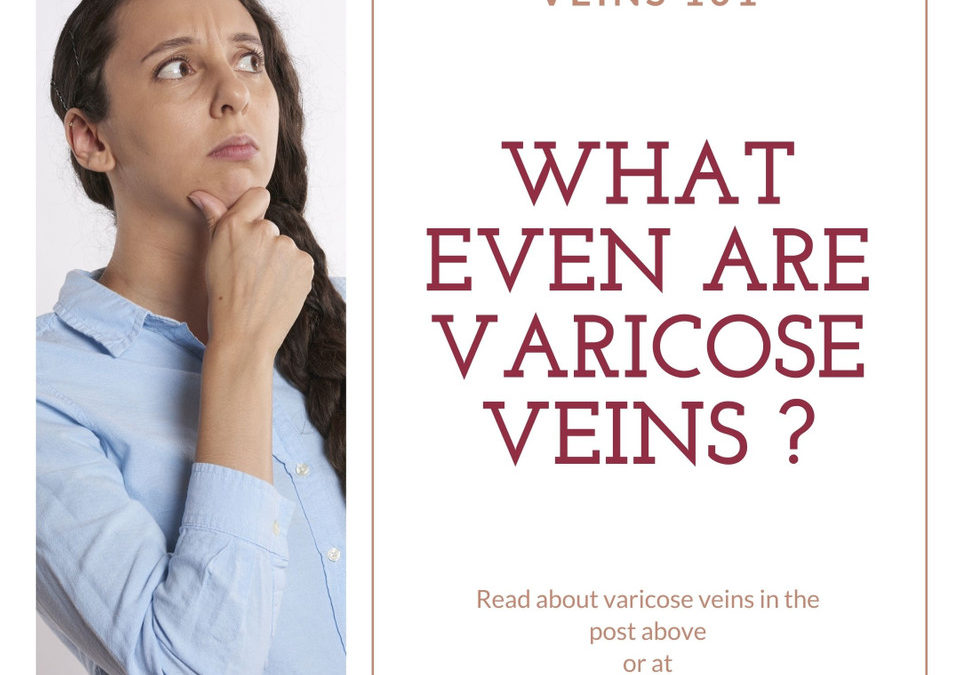Welcome to the first session of Veins 101… We hope that this new blog series will teach you all the ins and outs you need to know about your veins, how they work, and what can be done to treat problems that arise.
In this first post, we will be covering the basics… What even are Varicose Veins?
Let’s first talk about veins in general. Veins are the vessels that carry blood from your organs and extremities back to your heart. Within veins there are valves that prevent blood from flowing backwards, in this case, away from the heart.
The most basic definition of a varicose vein is a vein that is twisted and enlarged.
Varicose veins are formed by increased pressure in the veins. Varicose veins can form in any superficial veins, but they are most commonly found in the legs because of increased pressure from standing, walking, and being upright. They are diagnosed via ultrasound that detects the malfunctioning valves and backward blood flow. It is this backward blood flow that ultimately causes the increased pressure that results in a twisted, enlarged varicose vein.
For many people, varicose veins are simply a cosmetic eye sore. For others, varicose veins cause discomfort, swelling, lymphedema, itching, burning, non-healing ulcers, and numerous other uncomfortable symptoms. In these cases, varicose veins are a medical issue that need treating in order to improve quality of life.
If you wonder if your veins are cosmetic or a medical issue, call Totality today for your free screening.
Be sure to come back in two weeks for the next installment of Veins 101.

